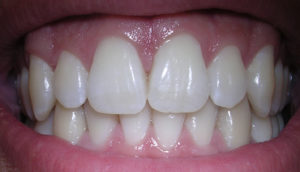Same research study is discussed as in the last post (Your Bacteria All Over Your Home), but different write-up with more and different details. From Washington Post:
Hotel rooms aren’t yucky – you colonize them with your own personal bacteria within hours
When you move from one house to another, you take all your bacteria with you. In fact, your family's microbiome (or your eco-system of inner and outer bacteria) lays claim to hotel rooms with hours. Our bacterial signatures are so persistent and so unique, a new study published Thursday in Science reports, that they could even be used in forensic investigations — and eventually become more useful to police than an old-fashioned fingerprint. And the same research that could track down a serial killer could also help you raise healthier kids.
In studying seven families as they moved from one house to another, the microbiologists had one major takeaway: Bacteria move from your body to your living space at incredible speed.
"Everyone thinks hotels are icky," said Jack Gilbert,, corresponding author of the study and environmental microbiologist at Argonne National Laboratory, "but when one young couple we studied moved into a hotel, it was microbiologically identical to their home within 24 hours." And unpublished further research reveals that the time frame is even swifter than that. "No matter what you do to clean a hotel room," Gilbert said, "your microbial signal has wiped out basically every trace of the previous resident within hours."
What's more, the researchers were able to determine how much individuals in a family interacted, what rooms they used, and even when they'd last been to one part of the house or another. This has obvious applications in forensic science. "We could go all J. Edgar Hoover on this and make a database of microbial fingerprints of people all over the world," Gilbert said, "and it's far more sophisticated than a standard fingerprint, which is just a presence or absence indication. We can see who they are, where they're from, the diet they're eating, when they left, who they may have been interacting with. It gets pretty crazy."
Gilbert and his colleagues are already working with police in Hawaii, hoping to look at the microbiome left on dead bodies. "If someone is, shall we say, recently and inappropriately deceased," Gilbert said, "we can look at their bacterial colonies and try to identify who the last person to come into contact with them was, and when." Based on some promising animal studies, he said, it could be possible. "An actual fingerprint is rarely left on a body," Gilbert said, "but a microbial fingerprint certainly is."
The Home Microbiome Study has more immediate applications, too. Gilbert, a father of two, hopes that fellow parents will use these and future findings to raise their offspring in healthier microbiomes. Before the age of two, the human microbiome remains in flux. Different species of bacteria compete to gain permanent spots — and once the race is run, you're basically stuck with the winners. Research in animals has shown that bacterial exposure in youth can impact physical and mental development and health for the rest of an organism's life.
"Let's say a kid grows up in an apartment block, without going outside much," Gilbert said. "They're just getting this same human bacteria fed back to them, day after day." More exposure is most certainly the better route.
For starters, get a dog. Partway through the study, Gilbert did just that. "We saw dogs acting as a super-charged conduit," he said, "transferring bacteria between one human and another, and bringing in outdoor bacteria. They just run around distributing microbes all willy-nilly." Sure enough, his family saw their home's microbiome benefit from the new addition.
We now know that most bacteria are beneficial to us — and that some can even prevent allergies."Imagine if we could engineer our home environments, optimize our carpeting and air conditioning systems, to bring in the really good bacteria," he said.

 Interesting study that definitely needs follow-up to see if it also applies to women. Nice news for coffee drinkers - that coffee consumption may have protective effects against gum disease. From Medical Xpress:
Interesting study that definitely needs follow-up to see if it also applies to women. Nice news for coffee drinkers - that coffee consumption may have protective effects against gum disease. From Medical Xpress: The bottom line is to read the ingredients list on products, and avoid all products labeled "antimicrobial" or "antibacterial" (because those are the ones typically containing triclosan and triclorocarban). Over 2000 products contain antibacterial compounds. I've even seen them in pillows, pillow protectors, mattress pads, dish racks, toys, and blankets! As we know from the latest microbiology research, we need to cultivate a healthy microbiome, and not throw it out of whack by continuously trying to kill off all bacteria. From The Atlantic:
The bottom line is to read the ingredients list on products, and avoid all products labeled "antimicrobial" or "antibacterial" (because those are the ones typically containing triclosan and triclorocarban). Over 2000 products contain antibacterial compounds. I've even seen them in pillows, pillow protectors, mattress pads, dish racks, toys, and blankets! As we know from the latest microbiology research, we need to cultivate a healthy microbiome, and not throw it out of whack by continuously trying to kill off all bacteria. From The Atlantic: